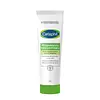What's inside
What's inside
 Key Ingredients
Key Ingredients

 Benefits
Benefits

 Concerns
Concerns

 Ingredients Side-by-side
Ingredients Side-by-side

Water
Skin ConditioningGlycerin
HumectantPetrolatum
EmollientDicaprylyl Ether
EmollientDimethicone
EmollientGlyceryl Stearate
EmollientCetyl Alcohol
EmollientHelianthus Annuus Seed Oil
EmollientPEG-30 Stearate
EmulsifyingPanthenol
Skin ConditioningNiacinamide
SmoothingPrunus Amygdalus Dulcis Oil
Skin ConditioningTocopherol
AntioxidantTocopheryl Acetate
AntioxidantPantolactone
HumectantDimethiconol
EmollientAcrylates/C10-30 Alkyl Acrylate Crosspolymer
Emulsion StabilisingCarbomer
Emulsion StabilisingPropylene Glycol
HumectantBHT
AntioxidantDisodium EDTA
Benzyl Alcohol
PerfumingPhenoxyethanol
PreservativeSodium Hydroxide
BufferingCitric Acid
BufferingWater, Glycerin, Petrolatum, Dicaprylyl Ether, Dimethicone, Glyceryl Stearate, Cetyl Alcohol, Helianthus Annuus Seed Oil, PEG-30 Stearate, Panthenol, Niacinamide, Prunus Amygdalus Dulcis Oil, Tocopherol, Tocopheryl Acetate, Pantolactone, Dimethiconol, Acrylates/C10-30 Alkyl Acrylate Crosspolymer, Carbomer, Propylene Glycol, BHT, Disodium EDTA, Benzyl Alcohol, Phenoxyethanol, Sodium Hydroxide, Citric Acid
Water
Skin ConditioningGlycerin
HumectantDimethicone
EmollientCaprylic/Capric Triglyceride
MaskingSqualane
EmollientAmmonium Polyacryloyldimethyl Taurate
Emulsion StabilisingBHT
AntioxidantBiosaccharide Gum-1
HumectantCaprylyl Glycol
EmollientCopper Gluconate
Skin ConditioningDimethiconol
EmollientDisodium EDTA
Magnesium Aspartate
Skin ConditioningPhenoxyethanol
PreservativePoloxamer 338
EmulsifyingSodium Hyaluronate
HumectantT-Butyl Alcohol
PerfumingXanthan Gum
EmulsifyingZinc Gluconate
Skin ConditioningParfum
MaskingWater, Glycerin, Dimethicone, Caprylic/Capric Triglyceride, Squalane, Ammonium Polyacryloyldimethyl Taurate, BHT, Biosaccharide Gum-1, Caprylyl Glycol, Copper Gluconate, Dimethiconol, Disodium EDTA, Magnesium Aspartate, Phenoxyethanol, Poloxamer 338, Sodium Hyaluronate, T-Butyl Alcohol, Xanthan Gum, Zinc Gluconate, Parfum
Ingredients Explained
These ingredients are found in both products.
Ingredients higher up in an ingredient list are typically present in a larger amount.
BHT is a synthetic antioxidant and preservative.
As an antioxidant, it helps your body fight off free-radicals. Free-radicals are molecules that may damage your skin cells.
As a preservative, it is used to stabilize products and prevent them from degrading. Specifically, BHT prevents degradation from oxidation.
The concerns related to BHT come from oral studies; this ingredient is currently allowed for use by both the FDA and EU.
However, it was recently restricted for use in the UK as of April 2024.
Learn more about BHTDimethicone is a type of synthetic silicone created from natural materials such as quartz.
What it does:
Dimethicone comes in different viscosities:
Depending on the viscosity, dimethicone has different properties.
Ingredients lists don't always show which type is used, so we recommend reaching out to the brand if you have questions about the viscosity.
This ingredient is unlikely to cause irritation because it does not get absorbed into skin. However, people with silicone allergies should be careful about using this ingredient.
Note: Dimethicone may contribute to pilling. This is because it is not oil or water soluble, so pilling may occur when layered with products. When mixed with heavy oils in a formula, the outcome is also quite greasy.
Learn more about DimethiconeDimethiconol is a silicone that resembles the popular dimethicone. Like other silicones, it is an emollient. Emollients create a thin film on skin to prevent moisture from escaping.
This ingredient helps to create a silky texture and improve spreadability. Due to its high molecular weight and thickness, it is often combined with cyclopentasiloxane.
Disodium EDTA plays a role in making products more stable by aiding other preservatives.
It is a chelating agent, meaning it neutralizes metal ions that may be found in a product.
Disodium EDTA is a salt of edetic acid and is found to be safe in cosmetic ingredients.
Learn more about Disodium EDTAGlycerin is already naturally found in your skin. It helps moisturize and protect your skin.
A study from 2016 found glycerin to be more effective as a humectant than AHAs and hyaluronic acid.
As a humectant, it helps the skin stay hydrated by pulling moisture to your skin. The low molecular weight of glycerin allows it to pull moisture into the deeper layers of your skin.
Hydrated skin improves your skin barrier; Your skin barrier helps protect against irritants and bacteria.
Glycerin has also been found to have antimicrobial and antiviral properties. Due to these properties, glycerin is often used in wound and burn treatments.
In cosmetics, glycerin is usually derived from plants such as soybean or palm. However, it can also be sourced from animals, such as tallow or animal fat.
This ingredient is organic, colorless, odorless, and non-toxic.
Glycerin is the name for this ingredient in American English. British English uses Glycerol/Glycerine.
Learn more about GlycerinPhenoxyethanol is a preservative that has germicide, antimicrobial, and aromatic properties. Studies show that phenoxyethanol can prevent microbial growth. By itself, it has a scent that is similar to that of a rose.
It's often used in formulations along with Caprylyl Glycol to preserve the shelf life of products.
Water. It's the most common cosmetic ingredient of all. You'll usually see it at the top of ingredient lists, meaning that it makes up the largest part of the product.
So why is it so popular? Water most often acts as a solvent - this means that it helps dissolve other ingredients into the formulation.
You'll also recognize water as that liquid we all need to stay alive. If you see this, drink a glass of water. Stay hydrated!
Learn more about Water